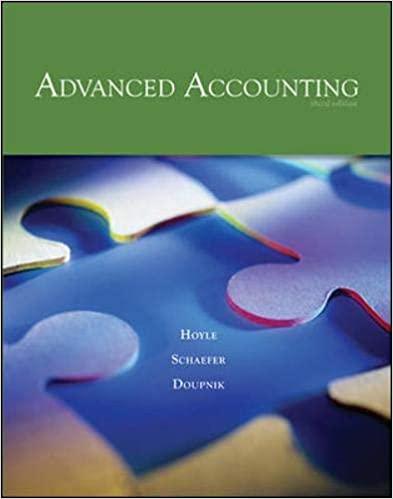Following is a series of independent cases. In each situation, indicate the cash distribution to be made
Question:
Following is a series of independent cases. In each situation, indicate the cash distribution to be made at the end of the liquidation process. Unless otherwise stated, assume that all solventpartners will reimburse the partnership for their deficit capital balances.
Part A The Simon, Haynes, and Jackson partnership presently reports the following accounts. Jackson is personally insolvent and can contribute only an additional $3,000 to the partnership. Simon is also insolvent and has no available funds.
Cash.$ 30,000 Liabilities. 22,000 LO6 Haynes,loan. 10,000 Simon, capital(40%). 16,000 Haynes, capital (20%).(6,000)
Jackson, capital (40%).(12,000)
Part B Hough, Luck, and Cummings operate a local accounting firm as a partnership. After working together for several years, they have decided to liquidate the partnership’s property. The partners have prepared the following balance sheet:
Cash.$ 20,000 Hough,loan. 8,000 Noncash assets. 162,000 Total assets. $190,000 Liabilities... $ 40,000 Luck,loan. 10,000 Hough, capital (50%). 90,000 Luck, capital (40%). 30,000 Cummings, capital (10%). 20,000 Total liabilities and capital .... $190,000 The firm sells the noncash assets for $80,000; it will use $21,000 of this amount to pay liqui¬ dation expenses. All three of these partners are personally insolvent.
Part C Use the same information as in Part B, but assume that the profits and losses are split 2:4:4 to Hough, Luck, and Cummings, respectively, and that liquidation expenses are only $6,000.
Part D Following the liquidation of all noncash assets, the partnership of Redmond, Ledbetter, Watson, and Sandridge has the following account balances:
Liabilities. $ 28,000 Redmond, loan.5,000 Redmond, capital(20%). (21,000)
Ledbetter, capital (10%).(30,000)
Watson, capital(30%). 3,000 Sandridge, capital(40%). 15,000 Redmond is personally insolvent.
Step by Step Answer:

Advanced Accounting
ISBN: 9780073379456
9th Edition
Authors: Joe Ben Hoyle, Timothy S. Doupnik, Thomas F. Schaefer, Oe Ben Hoyle





